Opinion & Analysis
Jonas Blixt Case Study: From Back Pain to PGA Tour Win
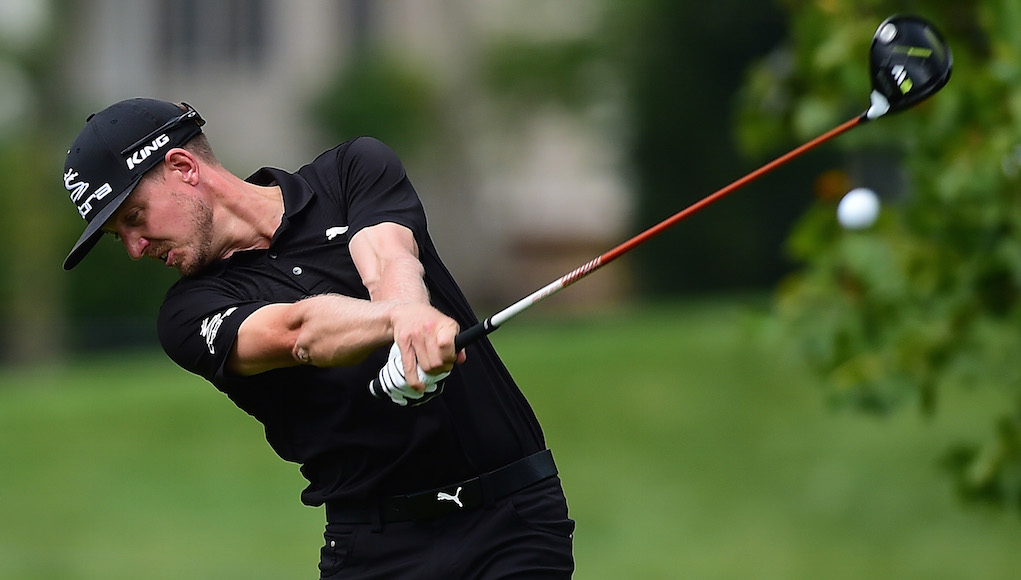
This is a case study on professional golfer Jonas Blixt and his eight-month journey from severe and persistent back pain to a PGA Tour win. It was written to offer insight into the work that a dedicated professional put into his body and his game after a setback due to a significant injury. The case study also serves to highlight the importance of training for posture, spinal strength, and shoulder girdle stability: three areas of training that are often misunderstood and under-appreciated.
The majority of Jonas’ rehab and progression forward was performed using GravityFit exercise techniques and products. GravityFit is an Australian-based company that specializes in a science-based approach to training the body for spinal strength, injury prevention, posture, and golf movement patterns.
Background: Jonas, 32, and is in his sixth season on the PGA Tour. He’s won three times in his career (2012 Frys.com Open, 2013 Greenbrier Classic, 2017 Zurich Classic), and his best finish in a major came in 2012 when he finished T2 at the Masters.
Strengths: Putting, Around the Green. Career-average rank of 33rd in Strokes Gained Putting. Career-average rank of 36th in Strokes Gained Around the Green.
Weaknesses: Off the Tee, Iron Play. Career-average rank of 143rd Strokes Gained Off the Tee. Career-average rank of 158th in Strokes Gained Approach the Green.
Physical Training History: College program at Florida State University. Exposure to various different methods of training stability, mobility, strength, and power since turning professional.
First Contact
Jonas came to see me with after having received two cortisone shots for back pain resulting from herniated discs leading to nerve compression in his lower back. He also received another shot for pain referring into his left glute/hip, suspected at the time to be caused by facet joint inflammation. His desire was initially to return to a pain-free state, and then to improve his long game by hitting more fairways and greens, thereby gaining strokes on the field in the Strokes Gained Off the Tee and Strokes Gained Approach the Green categories. If that outcome could be accompanied by an increase in distance, then that would be a bonus.
After conducting the initial screening and assessment, I highlighted the following areas as priorities for improvement:
- Lumbar and cervical spine posture (lower back and neck).
- Core awareness, stability, and control.
- Arm and body connection movement pattern in rotation.
- Quality of rotation movement pattern from thoracic spine (mid and upper back).
- Mobility in right shoulder (external rotation), thoracic spine (rotation and extension), ankle (dorsi flexion), and quad tightness.
I believed that improving these areas would not only help Jonas move better in his golf swing, but more importantly at that stage, help take strain away from his lower back.
Of particular interest was how Jonas performed in a series of tests for awareness control and stability of the lumbar core (think core muscles and lower back). This seven-stage series of tests is called the Core Body Benchmark. It was developed by GravityFit to provide a more objective measure of core control that could be easily administered in any setting.
Jonas failed the last four tests in the series:
- Hinge Forward
- Hinge Forward with Rotation
- Single Leg Hinge Forward
- Single Leg Rotation
Despite a history of core training, Jonas was unable to use his core muscles effectively in the movements that he repeated up to a thousand times per week: hinging forward, balancing, and rotating (the key components of the golf swing). Click through for more info on the Core Body Benchmark testing protocol.
Initial Program: These assessment findings, combined with the recent back injury, immediately lead me to write Jonas’ first program using predominantly GravityFit tools and techniques, which are specifically designed for strengthening the spine and improving posture. Luckily, we had a few weeks before the first tournament of the 2017 season, so it was time to go work. Below is a snapshot of the initial program, including a few photos of Jonas and myself demonstrating the exercises.
Program 1
A very basic daily program that focused on establishing good posture, as well as training basic spinal stability and quality of rotation. This program also included a 20-minute walk in the soft sand (Jonas lives near the beach) and a range of self-massage and stretching exercises. The exercises are below and were performed using the Gravity Cap and GravityFit TPro.
Movement Patterns
- 1A: Gravity Cap Walk
- 1B: Gravity Cap Knee Lifts
- 1C: Stomp and Pulse
- 1D: Split-Stance Backswing
- 1E: Split-Stance Follow Through
Conditioning
- 1: Beach Walk
Gravity Cap Knee Lifts (Figure 1): This exercise establishes a solid upright posture, stretching tall against the resistance provided by the Gravity Cap.
Stomp and Pulse (Figure 2): Here I’m training golf posture using the TPro for postural feedback and scapula/shoulder stability and control.
Split-Stance Backswing (Figure 3): Training dynamic rotation using the TPro while working on balance and control with the split stance.
Program 2
After two weeks of the initial program, we progressed into more traditional exercises (squat, lunge, push, pull) with the addition of the GravityFit TPro and Core Awareness Belt (CAB) to give audio and kinaesthetic feedback on quality of movement and postural control. We also advanced the specific posture and rotation exercises to add some more complexity and challenge. As you can see in the video below, at this stage even a simple bodyweight squat was a challenge for Jonas.
Strength
- 1A: Body-Weight Squat
- 1B: Push Up
- 1C: BW Backward Lunge
- 1D: Cable 1-Arm Row
- 1E: Mini Mountain Climber
- 1F: Pallof Press
Movement Patterns
- 1A: Gravity Cap Hurdle Walk
- 1B: Split-Squat Rotate
- 1C: Jonas Backswing Drill
Jonas Backswing Drill (Figure 4): Jonas is using the TPro and the Core Awareness Belt (CAB). Notice the hand position: right palm up, left palm down. This was a custom feel for Jonas that he wanted to train in his backswing.
Video 1
Body-Weight Squat (Video 1): Jonas initially struggled to squat while maintaining his posture. A combination of ankle mobility restriction and lack of core control made it very difficult for him.
About 5 weeks after our initial session, the fall series events came around Jonas decided to play. We continued to gradually increase the complexity of the exercises, each program requiring a little more from the perspective of stability and postural control. The majority was still only using bodyweight and some light band resistance.
Programs 3 and 4
At this point, Jonas was really starting to improve his movement quality and balance.
Split-Hand, One-Foot Push Up (Figure 5): An advanced version of a push up, again using the TPro and CAB to provide feedback on the quality of posture and movement. This is a fairly typical example of advancing an exercise’s difficulty without adding external load.
Program 3
Strength
- 1A: Overhead Squat
- 1B: Split-Hand, One-Foot Push Up
- 1C: Lateral Lunge with Knee Lift
- 1D: Single-Arm, Split-Stance Pulldown
- 1E: Prone Turn Under
- 1F: Split-Stance Pallof Press
- 1G: Lying Glute Bridge, Foot Up
Movement Patterns
- 1A: Gravity Cap Hurdle Walk
- 1B: Jonas Backswing Drill
- 1C: Follow Through
Program 4
Stability
- 1A: Knee Band Crab Walks
- 1B: Crawling
Strength
- 1A: Goblet Squat
- 1B: Resistance Band Push Up
- 2A: Bulgarian Split Squat
- 2B: Cable 1-Arm Row
- 3A: 1-Leg Band Push Out
- 3B: Pallof Hold
Video 2
Lateral Lunge with Knee Lift (Video 2): This exercise is really quite challenging to perform with balance and control while avoiding the audio feedback that the CAB provides when the core isn’t working properly.
Video 3
Single-Arm, Split-Stance Pulldown (Video 3): Again, a variation on a simple exercise with the aim of introducing a balance and co-ordination challenge.
Return to Playing
Jonas’ transition back to golf wasn’t exactly smooth. Despite showing significant signs of improvements in his movement quality and overall back pain, he was still struggling with occasional flashes of pain into his left glute during play and when getting up and down from a low, seated position. His results and Strokes Gained statistics tell the story of on-course performance.
- Results: Four events, three missed cuts and a T48
- Strokes Gained Off The Tee: -1.441
- Strokes Gained Approach the Green: -0.464
Over the six-week Christmas break, it was decided that a complete rest from golf was a good idea. This would allow Jonas’ back more time to heal and also offered him the opportunity to receive some treatment and advice for the occasional flashes of pain that seemed to be hanging around. Dr. Craig Davies and the Swedish Spine Institute had very effective input into helping resolve the issue, which was eventually identified as a glute med/min tendonitis. Meanwhile, we continued to progress the difficulty of the training programs and added some more significant load.
Program 5
We moved into more traditional strength movements and methods of loading. These were all done still using the GravityFit equipment to provide postural feedback.
Stability
- 1A: Fall to Wall – 2 Arms
- 1B: Single Arm Turn Under
Strength
- 1A: BB Front Squat
- 1B: DB Bent Over Row
- 2A: DB Step Up
- 2B: Torsonator Shoulder Press
- 3A: Suspended Leg Lift – Bent Knee
- 3B: Prone Hold 2 Limb Switch
Barbell Front Squat (Figure 6): This is a classic strength exercise that requires excellent squat mechanics and postural control to be performed safely.
Torsonator Shoulder Press (Figure 7): Using a uni-lateral (one-sided) external loading technique requires more from the core and postural stabilizers. It was a big step forward when Jonas was able to comfortably perform these exercises.
2017
With the New Year came a return to practice and first start in the Sony Open. All traces of pain by this time had been eliminated, and Jonas’ elusive long game seemed to be showing significant signs improvement through his first few events of the year.
- Strokes Gained Approach Green: -0.217 (his career average was -0.44)
- Strokes Gained Off the Tee: +0.242 (his career average was -0.24)
- Club Head Speed: Increased to 112.5 mph from (108.5 mph at first event of 2017 fall season)
Building to a Win
As we moved forward into the spring tournaments, I progressed Jonas on to much more traditional strength-and-conditioning training sessions while still using the GravityFit equipment to provide feedback on posture and technique. We also continued to retain the daily exercises that focus on postural control with spinal strength and stability.
Program 6
Strength
- 1: Barbell Squat to Box
- 2: Dumbell Reverse Lunge
- 3: Barbell Hip Thrust
- 4A: Underhand Pull Up
- 4B: Plate-Weighted Push Up
- 4C: Dumbell High Row
Core
- 1A: V Sit
- 1B: Split-Stance Pallof Press
- 1C: Back Hyperextensions – Arms Up
Plate-Weighted Push Up (Figure 8): We moved to standard variations of exercises like this and adding more external load with the aim of eliciting a strength and muscle growth response (as opposed to stability before).
Video 4
Barbell Squat to Box (Video 4): We used the box to avoid the lower-back strain that is most acute at the bottom of a squat. This is a natural progression toward full squats.
Jonas should be applauded for his tenacity, conviction, and work ethic during this tough time. He has used a potentially career-threatening injury as an opportunity to improve his body to new levels. He’s also become more resistant to injury using the GravityFit techniques and equipment to develop superior postural awareness and control, plus strength and stability around his spine, shoulders, and hips. These improvements, combined with better rotational movement patterns, have improved his body for golf and seem to be having a positive transfer to his ball striking.
This all went along way to helping Jonas collect his third PGA Tour win at the Zurich Classic of New Orleans with partner Cameron Smith. Cameron is also a client of mine, and he has been using GravityFit equipment and techniques for years to train his posture and movement patterns.
For more information on the GravityFit exercise tools and techniques I used with Jonas, as well as Cameron Smith, click through to GravityFit’s website. For more information on my online training, service check out my Golf Fit Pro website.
- LIKE99
- LEGIT6
- WOW3
- LOL2
- IDHT0
- FLOP1
- OB2
- SHANK8
Opinion & Analysis
The Wedge Guy: What really makes a wedge work? Part 1

Of all the clubs in our bags, wedges are almost always the simplest in construction and, therefore, the easiest to analyze what might make one work differently from another if you know what to look for.
Wedges are a lot less mysterious than drivers, of course, as the major brands are working with a lot of “pixie dust” inside these modern marvels. That’s carrying over more to irons now, with so many new models featuring internal multi-material technologies, and almost all of them having a “badge” or insert in the back to allow more complex graphics while hiding the actual distribution of mass.
But when it comes to wedges, most on the market today are still single pieces of molded steel, either cast or forged into that shape. So, if you look closely at where the mass is distributed, it’s pretty clear how that wedge is going to perform.
To start, because of their wider soles, the majority of the mass of almost any wedge is along the bottom third of the clubhead. So, the best wedge shots are always those hit between the 2nd and 5th grooves so that more mass is directly behind that impact. Elite tour professionals practice incessantly to learn to do that consistently, wearing out a spot about the size of a penny right there. If impact moves higher than that, the face is dramatically thinner, so smash factor is compromised significantly, which reduces the overall distance the ball will fly.
Every one of us, tour players included, knows that maddening shot that we feel a bit high on the face and it doesn’t go anywhere, it’s not your fault.
If your wedges show a wear pattern the size of a silver dollar, and centered above the 3rd or 4th groove, you are not getting anywhere near the same performance from shot to shot. Robot testing proves impact even two to three grooves higher in the face can cause distance loss of up to 35 to 55 feet with modern ‘tour design’ wedges.
In addition, as impact moves above the center of mass, the golf club principle of gear effect causes the ball to fly higher with less spin. Think of modern drivers for a minute. The “holy grail” of driving is high launch and low spin, and the driver engineers are pulling out all stops to get the mass as low in the clubhead as possible to optimize this combination.
Where is all the mass in your wedges? Low. So, disregarding the higher lofts, wedges “want” to launch the ball high with low spin – exactly the opposite of what good wedge play requires penetrating ball flight with high spin.
While almost all major brand wedges have begun putting a tiny bit more thickness in the top portion of the clubhead, conventional and modern ‘tour design’ wedges perform pretty much like they always have. Elite players learn to hit those crisp, spinny penetrating wedge shots by spending lots of practice time learning to consistently make contact low in the face.
So, what about grooves and face texture?
Grooves on any club can only do so much, and no one has any material advantage here. The USGA tightly defines what we manufacturers can do with grooves and face texture, and modern manufacturing techniques allow all of us to push those limits ever closer. And we all do. End of story.
Then there’s the topic of bounce and grinds, the most complex and confusing part of the wedge formula. Many top brands offer a complex array of sole configurations, all of them admittedly specialized to a particular kind of lie or turf conditions, and/or a particular divot pattern.
But if you don’t play the same turf all the time, and make the same size divot on every swing, how would you ever figure this out?
The only way is to take any wedge you are considering and play it a few rounds, hitting all the shots you face and observing the results. There’s simply no other way.
So, hopefully this will inspire a lively conversation in our comments section, and I’ll chime in to answer any questions you might have.
And next week, I’ll dive into the rest of the wedge formula. Yes, shafts, grips and specifications are essential, too.
- LIKE27
- LEGIT7
- WOW1
- LOL1
- IDHT2
- FLOP3
- OB1
- SHANK2
Golf's Perfect Imperfections
Golf’s Perfect Imperfections: Amazing Session with Performance Coach Savannah Meyer-Clement

In this week’s episode, we spent some time with performance coach Savannah Meyer-Clement who provides many useful insights that you’ll be able to implement on the golf course.
- LIKE0
- LEGIT0
- WOW0
- LOL0
- IDHT0
- FLOP0
- OB0
- SHANK0
19th Hole
Vincenzi’s 2024 RBC Heritage betting preview: Patrick Cantlay ready to get back inside winner’s circle

Just a two-hour drive from Augusta National, the PGA TOUR heads to Harbour Town Golf Links in Hilton Head Island, S.C. Hilton Head Island is a golfer’s paradise and Harbour Town is one of the most beautiful and scenic courses on the PGA TOUR.
Harbour Town Golf Links is a par-71 that measures 7,121 yards and features Bermuda grass greens. A Pete Dye design, the course is heavily tree lined and features small greens and many dog legs, protecting it from “bomb-and-gauge” type golfers.
The field is loaded this week with 69 golfers with no cut. Last year was quite possibly the best field in RBC Heritage history and the event this week is yet another designated event, meaning there is a $20 million prize pool.
Most of the big names on the PGA Tour will be in attendance this week with the exceptions of Hideki Matsuyama and Viktor Hovland. Additionally, Webb Simpson, Shane Lowry, Gary Woodland and Kevin Kisner have been granted sponsors exemptions.
Past Winners at Harbour Town
- 2023: Matt Fitzpatrick (-17)
- 2022: Jordan Spieth (-13)
- 2021: Stewart Cink (-19)
- 2020: Webb Simpson (-22)
- 2019: CT Pan (-12)
- 2018: Sotoshi Kodaira (-12)
- 2017: Wesley Bryan (-13)
- 2016: Branden Grace (-9)
- 2015: Jim Furyk (-18)
In this article and going forward, I’ll be using the Rabbit Hole by Betsperts Golf data engine to develop my custom model. If you want to build your own model or check out all of the detailed stats, you can sign up using promo code: MATTVIN for 25% off any subscription package (yearly is best value).
Key Stats For Harbour Town
Let’s take a look at key metrics for Harbour Town Golf Links to determine which golfers boast top marks in each category over their past 24 rounds.
Strokes Gained: Approach
Strokes Gained: Approach is exceedingly important this week. The greens at Harbour Town are about half the size of PGA TOUR average and feature the second-smallest greens on the tour. Typical of a Pete Dye design, golfers will pay the price for missed greens.
Total SG: Approach Over Past 24 Rounds
- Scottie Scheffler (+1.27)
- Tom Hoge (+1.27)
- Corey Conners (+1.16)
- Austin Eckroat (+0.95)
- Cameron Young (+0.93)
Good Drive %
The fairways at Harbour Town are tree lined and feature many dog legs. Bombers tend to struggle at the course because it forces layups and doesn’t allow long drivers to overpower it. Accuracy is far more important than power.
Good Drive % Over Past 24 Rounds
- Brice Garnett (88.8%)
- Shane Lowry (+87.2%)
- Akshay Bhatia (+86.0%)
- Si Woo Kim (+85.8%)
- Sepp Straka (+85.1%)
Strokes Gained: Total at Pete Dye Designs
Pete Dye specialists tend to play very well at Harbour Town. Si Woo Kim, Matt Kuchar, Jim Furyk and Webb Simpson are all Pete Dye specialists who have had great success here. It is likely we see some more specialists near the top of the leaderboard this week.
SG: TOT Pete Dye per round over past 36 rounds:
- Xander Schauffele (+2.27)
- Scottie Scheffler (+2.24)
- Ludvig Aberg (+2.11)
- Brian Harman (+1.89)
- Sungjae Im (+1.58)
4. Strokes Gained: Short Game (Bermuda)
Strokes Gained: Short Game factors in both around the green and putting. With many green-side bunkers and tricky green complexes, both statistics will be important. Past winners — such as Jim Furyk, Wes Bryan and Webb Simpson — highlight how crucial the short game skill set is around Harbour Town.
SG: SG Over Past 24 Rounds
- Jordan Spieth (+1.11)
- Taylor Moore (+1.02)
- Wyndham Clark (+0.98)
- Mackenzie Hughes (+0.86)
- Andrew Putnam (+0.83)
5. Greens in Regulation %
The recipe for success at Harbour Town Golf Links is hitting fairways and greens. Missing either will prove to be consequential — golfers must be in total control of the ball to win.
Greens in Regulation % over past 24 rounds:
- Brice Garnett (+75.0%)
- Scottie Scheffler (+69.9%)
- Corey Conners (+69.0%)
- Shane Lowry (+68.3%)
- Patrick Rodgers (+67.6%)
6. Course History
Harbour Town is a course where players who have strong past results at the course always tend to pop up.
Course History over past 24 rounds:
- Patrick Cantlay (+2.34)
- Cam Davis (+2.05)
- J.T. Poston (+1.69)
- Justin Rose (+1.68)
- Tommy Fleetwood (+1.59)
The RBC Heritage Model Rankings
Below, I’ve compiled overall model rankings using a combination of the five key statistical categories previously discussed — SG: Approach (24%), Good Drives (20%), SG: SG (14%), SG: Pete Dye (14%), GIR (14%), and Course History (14%)
- Shane Lowry
- Russell Henley
- Scottie Scheffler
- Xander Schauffele
- Corey Conners
- Wyndham Clark
- Christiaan Bezuidenhout
- Matt Fitzpatrick
- Cameron Young
- Ludvig Aberg
2024 RBC Heritage Picks
Patrick Cantlay +2000 (FanDuel)
With the exception of Scottie Scheffler, the PGA Tour has yet to have any of their star players show peak form during the 2024 season. Last week, Patrick Cantlay, who I believe is a top-5 players on the PGA Tour, took one step closer to regaining the form that’s helped him win eight events on Tour since 2017.
Cantlay limped into the Masters in poor form, but figured it out at Augusta National, finishing in a tie for 20th and ranking 17th for the week in Strokes Gained: Ball Striking. The former FedEx Cup champion will now head to one of his favorite golf courses in Harbour Town, where he’s had immaculate results over the years. In his six trips to the course, he’s only finished worse than 7th one time. The other finishes include three third places (2017, 2019, 2023) and one runner-up finish (2022). In his past 36 rounds at Harbour Town, Cantlay ranks 1st in Strokes Gained: Total per round at the course by a wide margin (+2.36).
Cantlay is winless since the 2022 BMW Championship, which is far too long for a player of his caliber. With signs pointing to the 32-year-old returning to form, a “signature event” at Harbour Town is just what he needs to get back on the winning track.
Tommy Fleetwood +3000 (FanDuel)
I truly believe Tommy Fleetwood will figure out a way to win on American soil in 2024. It’s certainly been a bugaboo for him throughout his career, but he is simply too talented to go another season without winning a PGA Tour event.
At last week’s Masters Tournament, Fleetwood made a Sunday charge and ended up finishing T3 in the event, which was his best ever finish at The Masters. For the week, the Englishman ranked 8th in the field in Strokes Gained: Approach, 10th in Strokes Gained: Ball Striking and 16th in Strokes Gained: Putting.
Harbour Town is a perfect layout for Fleetwood, and he’s had relative success at this Pete Dye design in the past. In his four trips to the course, he’s finished inside of the top 25 three times, with his best finish, T10, coming in 2022. The course is pretty short and can’t be overpowered, which gives an advantage to more accurate players such as Fleetwood. Tommy ranks 8th in the field in Good Drive % and should be able to plot his way along this golf course.
The win is coming for Tommy lad. I believe there’s a chance this treasure of a golf course may be the perfect one for him to finally break through on Tour.
Cameron Young +3300 (FanDuel)
Cameron Young had a solid Masters Tournament last week, which is exactly what I’m looking for in players who I anticipate playing well this week at the RBC Heritage. He finished in a tie for 9th, but never felt the pressure of contending in the event. For the week, Young ranked 6th in Strokes Gained: Off the Tee and 6th in Strokes Gained: Ball Striking.
Despite being one of the longest players off the tee on the PGA Tour, Young has actually played some really good golf on shorter tracks. He finished T3 at Harbour Town in 2023 and ranks 20th in the field in Good Drive% and 16th in Greens in Regulation in his past 24 rounds. He also has strong finishes at other shorter courses that can take driver out of a players hand such as Copperhead and PGA National.
Young is simply one of the best players on the PGA Tour in 2024, and I strongly believe has what it takes to win a PGA Tour event in the very near future.
Corey Conners +5500 (FanDuel)
Corey Conners has had a disappointing year thus far on the PGA Tour, but absolutely loves Harbour Town.
At last week’s Masters Tournament, the Canadian finished T30 but ranked 20th in the field in Strokes Gained: Approach. In his past 24 rounds, Conners ranks 3rd in the field in Strokes Gained: Approach, 3rd in Greens in Regulation % and 24th in Good Drive %.
In Conners’ last four trips to Harbour Town, his worst finish was T31, last season. He finished T4 in 2021, T12 in 2022 and ranks 8th in Strokes Gained: Total at the course over his past 36 rounds.
Conners hasn’t been contending, but his recent finishes have been encouraging as he has finished in the top-25 in each of his past three starts prior to The Masters, including an impressive T13 at The PLAYERS. His recent improvement in ball striking as well as his suitability for Harbour Town makes Conners a high upside bet this week.
Shane Lowry (+7500) (FanDuel)
When these odds were posted after Lowry was announced in the field, I have to admit I was pretty stunned. Despite not offering much win equity on the PGA Tour over the last handful of years, Shane Lowry is still a top caliber player who has the ability to rise to the top of a signature event.
Lowry struggled to score at The Masters last week, but he actually hit the ball really well. The Irishman ranked 1st for Strokes Gained: Approach on the week and 7th in Strokes Gained: Ball Striking. As usual, it was the putter that let him down, as he ranked 60th in the field in Strokes Gained: Putting.
Harbour Town is most definitely one of Lowry’s favorite courses on the PGA Tour. In his six starts there, he’s finished in the top 10 three times, including third twice. Lowry is sensational at Pete Dye designs and ranks 7th in Strokes Gained: Total in his past 36 rounds on Dye tracks.
Lowry is perfect for Harbour Town. In his past 24 rounds, he ranks 5th in Strokes Gained: Approach, 2nd in Good Drive% and 5th in Green in Regulation %. If he figures it out on the greens, Shane could have his first win in America since 2015.
Lucas Glover +12000 (FanDuel)
This is one of my weekly “bet the number” plays as I strongly believe the odds are just too long for a player of Glover’s caliber. The odds have been too long on Glover for a few weeks now, but this is the first event that I can get behind the veteran being able to actually contend at.
Glover is quietly playing good golf and returning to the form he had after the understandable regression after his two massive victories at the end of 2023. He finished T20 at The Masters, which was his best ever finish at Augusta National. For the week, Lucas ranked 18th for Strokes Gained: Approach and 20th in Strokes Gained: Ball Striking.
Over his past 24 rounds, Glover ranks 9th in Strokes Gained: Approach and 13th in Good Drive %. Harbour Town is a short course that the 44-year-old will be able to keep up with the top players on Tour off the tee. He’s played the course more than 20 times, with mixed results. His best finishes at Harbour Town include a T7 in 2008, but recently has a finish of T21 in 2020.
Glover has proven he can contend with the stars of the Tour on any given week, and this number is flat out disrespectful.
- LIKE30
- LEGIT5
- WOW2
- LOL1
- IDHT1
- FLOP2
- OB0
- SHANK2
-

 19th Hole1 week ago
19th Hole1 week agoDave Portnoy places monstrous outright bet for the 2024 Masters
-

 19th Hole3 weeks ago
19th Hole3 weeks agoThings got heated at the Houston Open between Tony Finau and Alejandro Tosti. Here’s why
-

 19th Hole2 weeks ago
19th Hole2 weeks agoTiger Woods arrives at 2024 Masters equipped with a putter that may surprise you
-

 19th Hole2 weeks ago
19th Hole2 weeks agoReport: Tiger Woods has ‘eliminated sex’ in preparation for the 2024 Masters
-

 19th Hole6 days ago
19th Hole6 days agoTwo star names reportedly blanked Jon Rahm all week at the Masters
-

 19th Hole5 days ago
19th Hole5 days agoNeal Shipley presser ends in awkward fashion after reporter claims Tiger handed him note on 8th fairway
-

 19th Hole4 days ago
19th Hole4 days agoReport: LIV Golf identifies latest star name they hope to sign to breakaway tour
-

 19th Hole3 weeks ago
19th Hole3 weeks agoAddiction, spinal fusion, and scam artists – Everything Anthony Kim revealed in candid interview with David Feherty

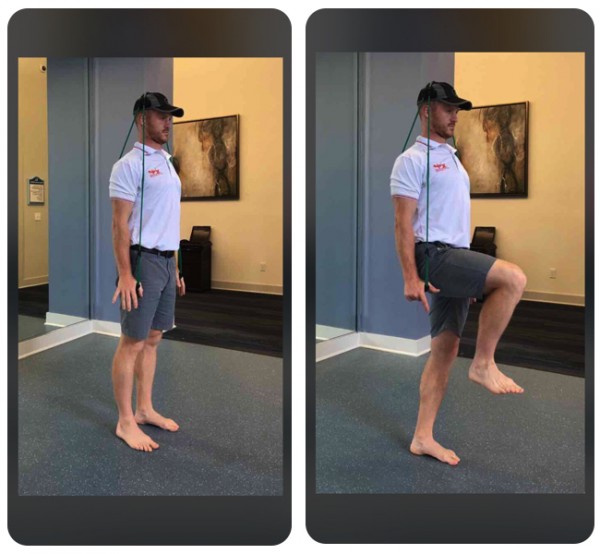
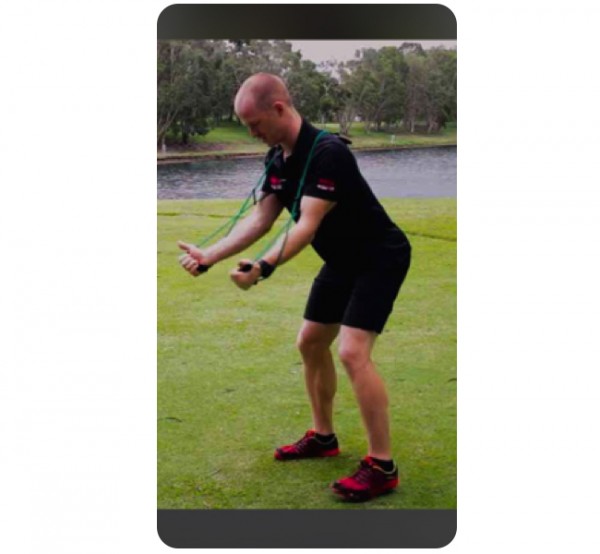
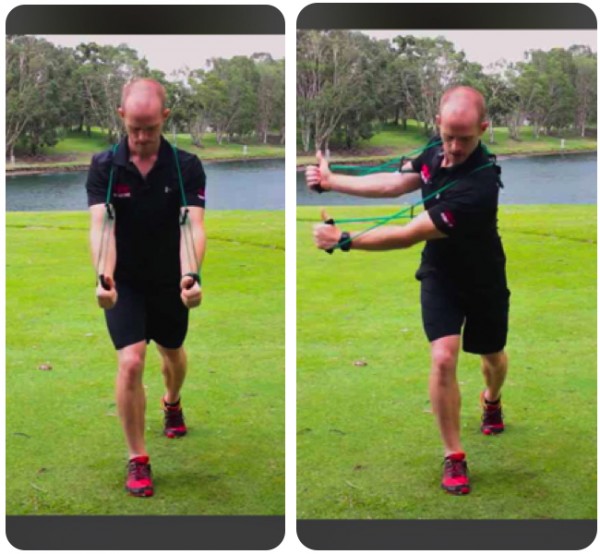
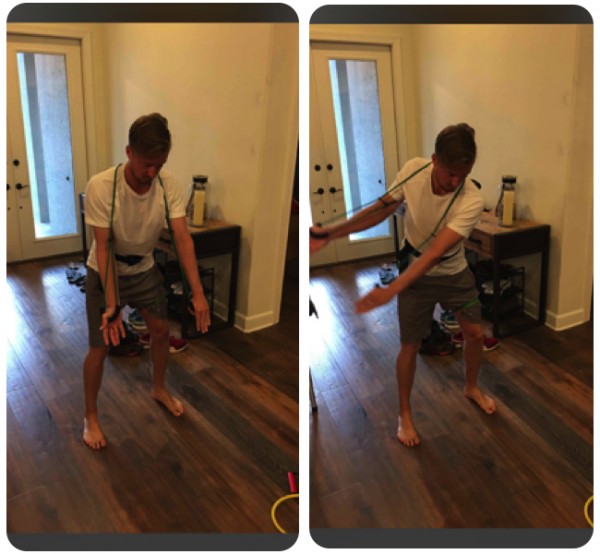
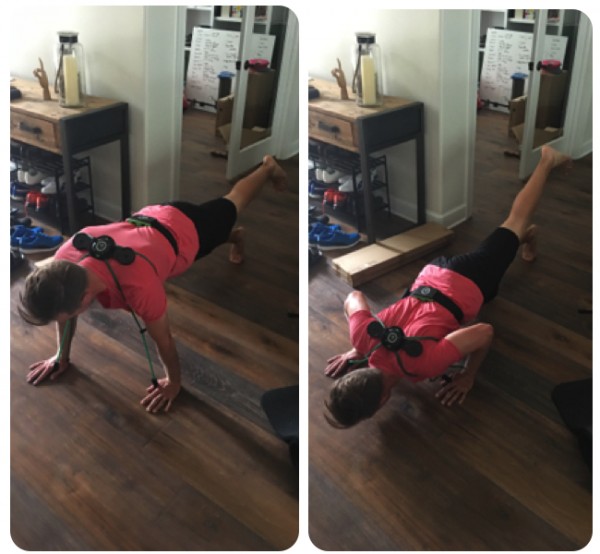
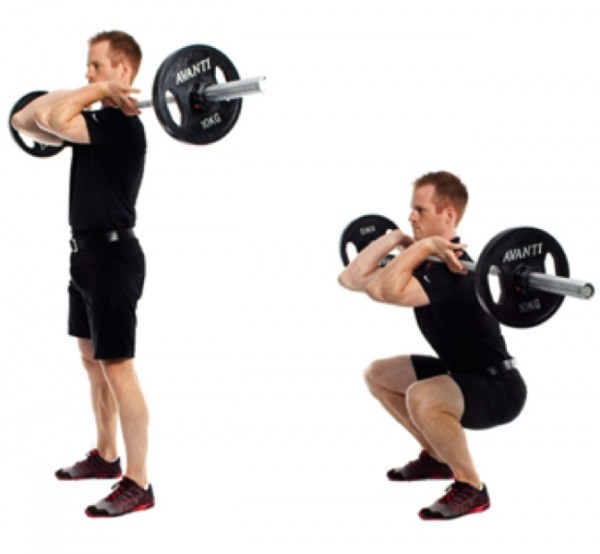
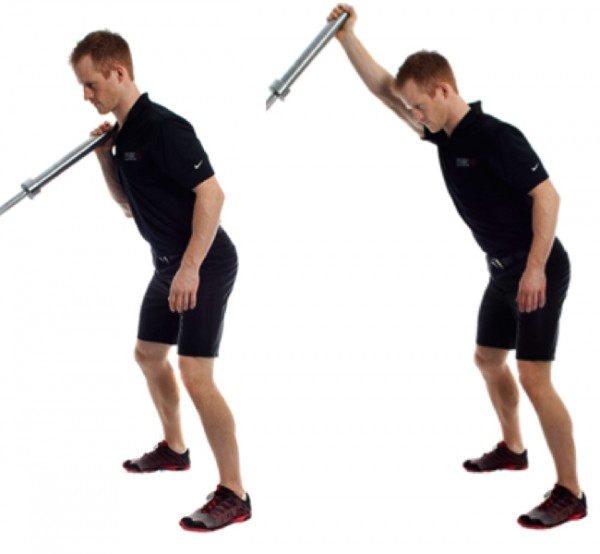
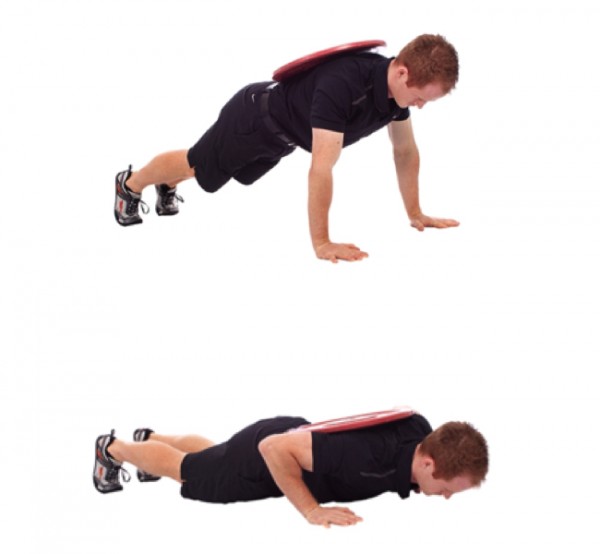













rosey
Aug 30, 2017 at 7:25 pm
great article!
And in case anyone cares, I’d definitely buy the “swing kit” off gravityfit if were half price. But $111 is crazy expensive!
Gnam
Aug 30, 2017 at 12:22 pm
Was Tiger right about his glutes not activating? 🙂
EngineerBob
Aug 30, 2017 at 3:40 pm
Vertically or horizontally? Now that he’s on all those prescription and recreational drugs he must be totally limpid …. if you know what I mean.
BH
Aug 30, 2017 at 8:54 am
Overall, this is an informative article. I appreciate this because I am someone who has back pain and is constantly working to make sure I keep it in control.
What I don’t appreciate is that the article implies that using GravityFit is THE way to do all of this. I incorporate most of these exercises into my workouts even without your product. So it’s frustrating for me to read this and get the impression that he had to use this product to get back to game shape. Any good fitness instructor could have worked with him and got him back all without that product.
Scott
Aug 30, 2017 at 8:26 am
Yes, proper rest after hitting a thousand balls is overlooked, especially by the young. There are always exceptions to the rule, but most will not escape the inevitable physical breakdown
Oppai
Aug 30, 2017 at 1:55 am
Geez, with all these exercises he had to do get fit and pain free, you would have thought he was a lazy fat slob of a weekend warrior trying to cut it on tour. Unbelievable that a player has to do all this just to stay with it on tour now.
Chris
Aug 30, 2017 at 7:46 am
It’s only in this particular case. Not every tour player need to go through all this.
SH
Aug 29, 2017 at 3:04 pm
Great article.. we hear that these guys train, but rarely get a glimpse into their regiment. Very cool!
Brad
Aug 29, 2017 at 3:36 pm
Visualize the training regimen and you too will be great in your mind.
SH
Aug 29, 2017 at 4:07 pm
I don’t think being great in our mind is an issue for any of us
Brad M.
Aug 29, 2017 at 1:57 pm
I’ve been a fan of bodyweight work for a long time. Adding resistance bands and the occasional extra load of weight (like in the standard pushup) is great after strength/stamina and fixing general fitness deficiencies have been accomplished. For the non-pro who may play/practice 2-10 times a month, are free weights and intensive weight training advised? Especially if we can’t afford (or simply won’t use) an expert for ongoing technical assistance?
Brad
Aug 29, 2017 at 3:34 pm
The average recreational play will never make a commitment to conditioning and training because they ‘don’t have the time’. They simply play for fun with their equally decrepit buddies and yukking their way painfully slowly down the course.
Of course a new set of SGI clubs ($1395), latest driver and fairways ($795) and a studio putter ($395) should make a significant improvement in their game. Oh, and ProV1s($50) for total tour quality WITB weapons. It’s a shame the clubs will get scratched up.
Instructors. trainers? Forget it, better to buy a rangefinder and great shoes and nifty clothes.
Boss
Aug 29, 2017 at 10:56 am
So, what you’re saying is, he wasn’t very fit before. LOL
Now he’s a bit more fitter, stronger.
But why not also change his swing and have him lift his left heel and swing with a more classic swing and let go of the finish and not strike a pose with feet down and torque twist that caused his problem like all modern swingers with the same problem?
Brad
Aug 29, 2017 at 10:53 am
Pro golfers injure their spine because they practice in an insane obsessive-compulsive manner. It’s all due to overuse, overstress and breakdown injury which is not given enough time to heal. IOW, they are oblivious to their injurious mental state and just continue on a downward spiral. These guys just fail and fade away. Blixt is an exception, but his chronic injury will haunt him forever.